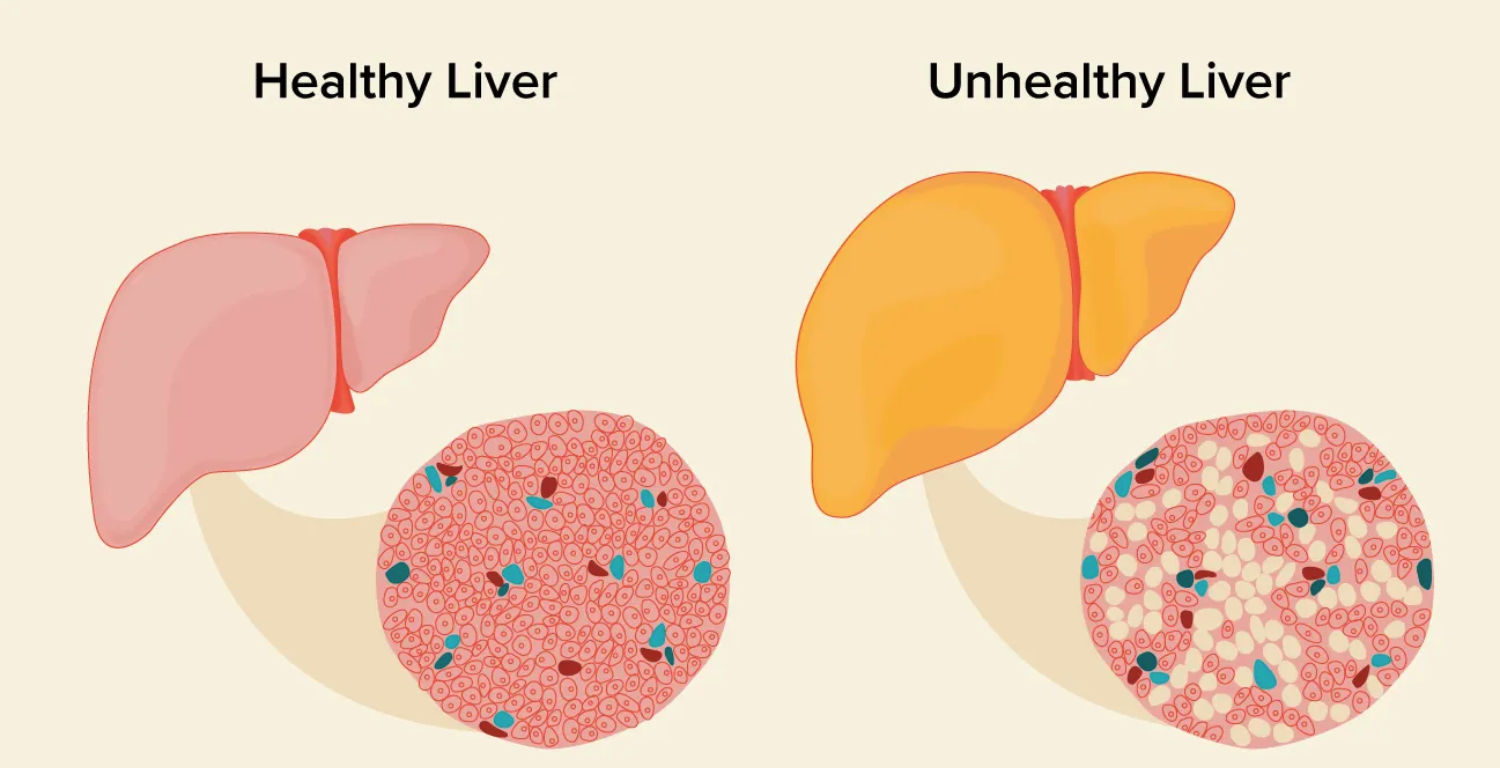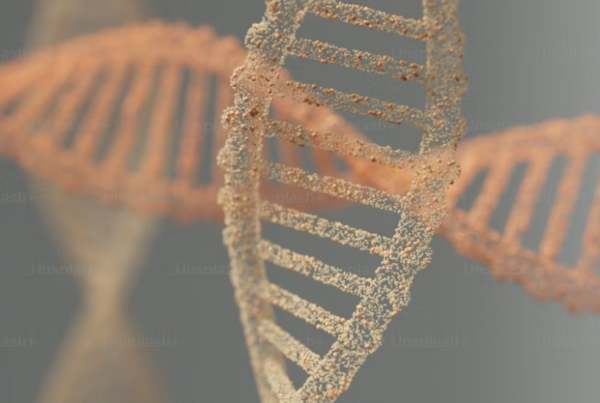An epidemic?
We are potentially all concerned, even children. One in three people suffer from hepatic steatosis, more commonly known as fatty liver disease, NASH (non alcoholic steatohepatitis), or NAFLD (non alcoholic fatty liver disease). The long-term damage is very serious, representing an early cause of mortality. If left untreated, fatty liver disease can lead to cirrhosis or cancer. Also know that you can have a fatty liver even if you do not consume a drop of alcohol, and even if you have no symptoms, no pain, no fatigue.
Where does the disease come from?
Fatty liver disease is directly linked to the modern lifestyle, to food or rather to the SAD (Standard American Diet) and to junk food. This is food fattening, it can make your liver as fat as a French duck of goose, and it results from the excessive consumption of sugars and trans fats from industrial food, but also from the over consumption of cereals and other starchy foods several times a day. Industrial products contain large amounts of sugar, fructose and glucose in the form of high fructose corn sirup, as well as agave, corn, rice sirups. These are largely found in sodas, in all sweet preparations, but also in almost all salty processed food.
Good fats / Bad fats
For decades, marketing and media messages have demonized fat, supposedly guilty of making us fat and putting us at risk of cardiovascular accidents. We have thus been conditioned to leave aside the slightest bit of fat in a steak, to limit the consumption of eggs, and to buy products that bear the mention “light”. But fat is very important for us and not all fats should be put in the same basket. There are bad fats, including processed fats, and there are good fats such as vegetable first cold pressed or virgin oils of biological quality, which participate in the metabolism of fats. Some saturated fats such as butter and lard may not be bad for your health, this is what the Americans called the “French paradox”. French populations located in the South West and who consume a lot of fat duck confit, foie gras, cassoulet, etc), are less prone to heart attacks than the average American. Our brain and our cell walls are made of fat and consuming good fat will help nourish the membrane of our cells, especially our neurones.
Excess sugar consumption
Once in the body, sugar turns into fat and is stored in the abdominal cells. Sugar is nowadays consumed excessively, about 35 kg per habitant per year in France, 45 kg in the US . On the scale of humanity, the consumption of sugar is very recent. Fruits in ancient times had low concentrations of sugar, and our grandparents ate desserts on Sundays only. Only rather recently was sugar added to all prepared food that you can find in supermarkets and restaurants.
Fructose, the fruit sugar, does not in principle cause problems if it is consumed in its original form, i.e. raw, with the fibres of the fruit. On the other hand, when consumed in the form of juice, fructose will create a spike in the blood. The food industry widely uses fructose, in the form of corn syrup, agave, sucrose in many processed products, particularly in sodas and other sweet preparations.
How does the liver get fatty?
When the liver receives glucose in the form of sugary or refined foods, it transforms it into glycogen and stores it to convert it back into glucose when the body needs it, for physical exertion for example. But when the intake is excessive and the reserves cannot accommodate the surpluses, then glucose is transformed into triglycerides which will be stored in the adipose tissues and in the hepatocytes, the liver cells.
The liver then becomes engorged with fat, which causes a silent inflammation, not associated with symptoms or pain. When the inflammation becomes chronic, the liver changes to a fibrotic stage and progressive destruction of cells and liver function sets in. Years of chronic inflammation will progress to cirrhosis, liver failure and ultimately cancer.
At a more general body level, hepatic steatosis accelerates organs and tissue ageing, increases the risk of dementia, of Alzheimer’s disease and stroke.
The fatty infiltration of the liver will also lead to an accumulation of visceral fat in and around the digestive organs, including the pancreas, which will lead to insulin resistance, and therefore to diabetes.
Fatty liver can progress through four stages:
Simple fatty liver: There’s a buildup of excess fat in the liver. Simple fatty liver is largely harmless if it doesn’t progress.
Steatohepatitis: In addition to excess fat, there’s also inflammation in the liver.
Fibrosis: Persistent inflammation in the liver has now caused scarring. However, the liver can still generally function normally.
Cirrhosis: Scarring of the liver has become widespread, impairing the liver’s ability to function. This is the most severe stage and is irreversible.
What are the outward signs of fatty liver?
As fatty liver leads to increased visceral fat, a bulging abdomen and an increased waist circumference are indications that the liver could be in bad shape. But keep in mind that some people can be skinny while having a fatty liver. Sleep apnea, headaches, decreased appetite, frequent nausea are other possible signs of a fatty liver disease.
What tools to detect the presence of hepatic steatosis?
MRI, ultrasound or scanner are the most reliable tools. Blood tests will have to combine several criteria such as an increase in triglycerides, fasting blood sugar, glycated hemoglobin, and hepatic enzymes ALT, AST and gamma GT.
Is fatty liver disease reversible?
Yes it is, which is encouraging. The main measure to take to help the liver is a food rebalancing, which consists in strongly or completely reducing carbohydrates and bad fats intake, to favour low GI (glycemic index) foods, in order to reduce insulin resistance. Intermittent and prolonged fasting (48 hours or more) are also a very effective way to cause defatting of the liver. A healthy lifestyle is also important, making the fight against a sedentary a priority through the practice of regular and adapted physical exercise. Learning to manage stress and emotions will also be crucial, especially for people prone to compensatory and compulsive eating behaviours.
What more can be done?
Being guided by a health professional is highly recommended. Naturopathic or natural medicine will help protect the liver and activate liver functions, while taking great care of overall digestive health to repair the intestinal mucosa that has very often become compromised in the contact of NASH. Supplementation will help lower inflammation and improve metabolism.
If you suspect your liver needs help, book a consultation with Clinica Alostase, Tel +351 934 363 040.






